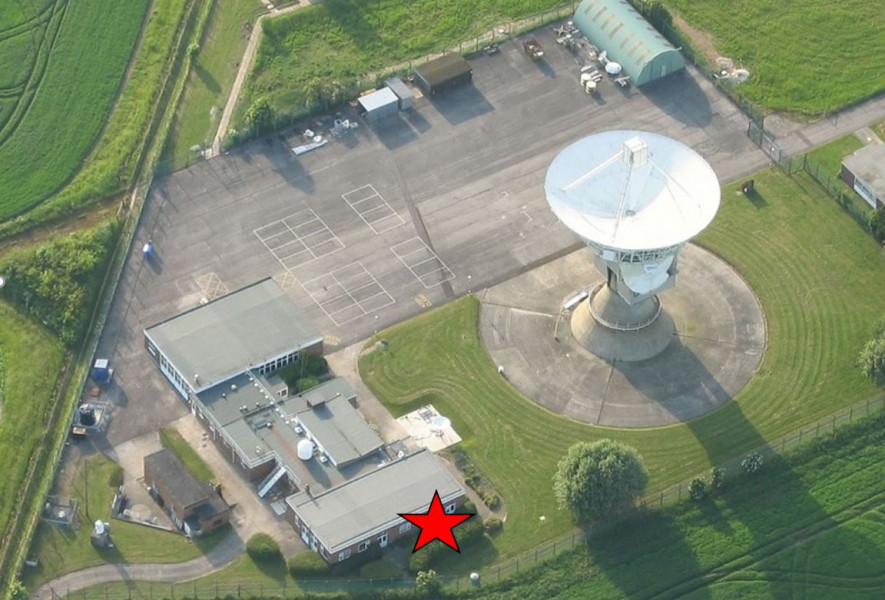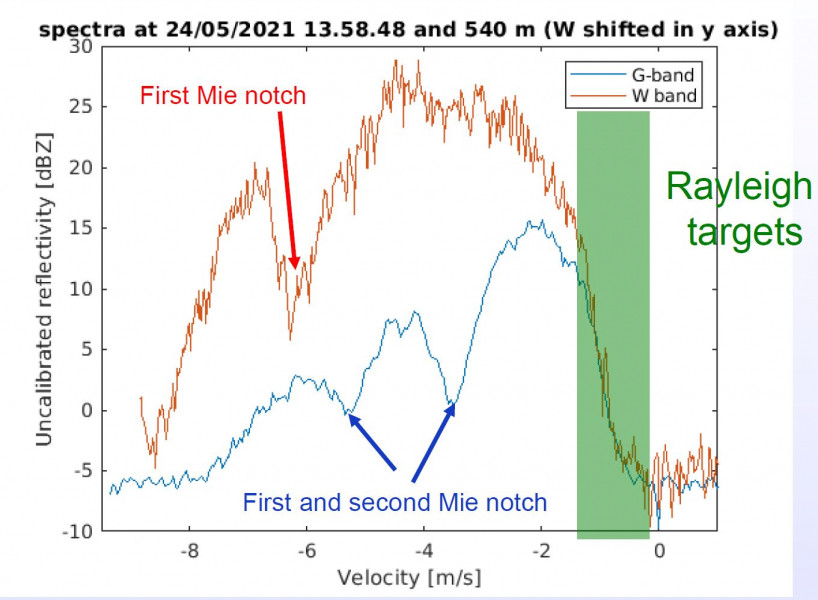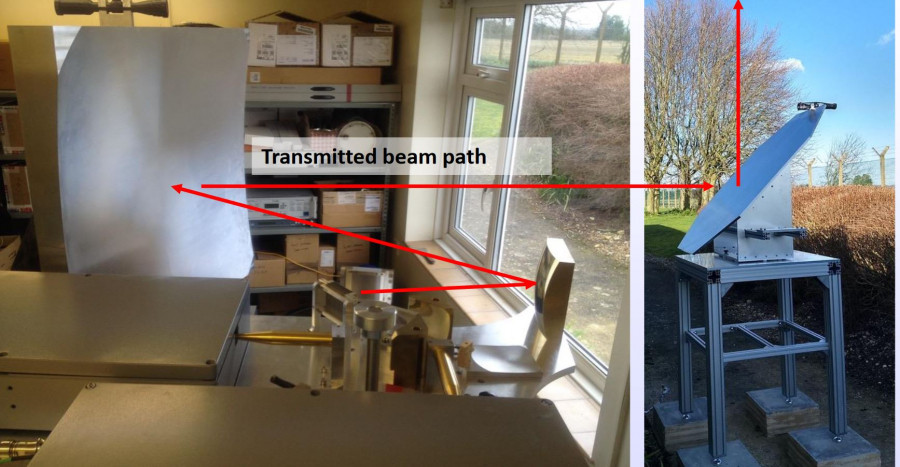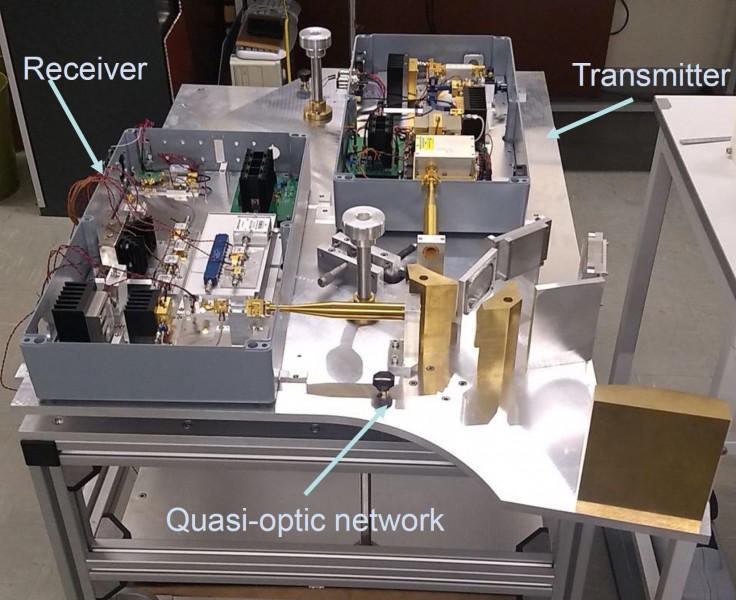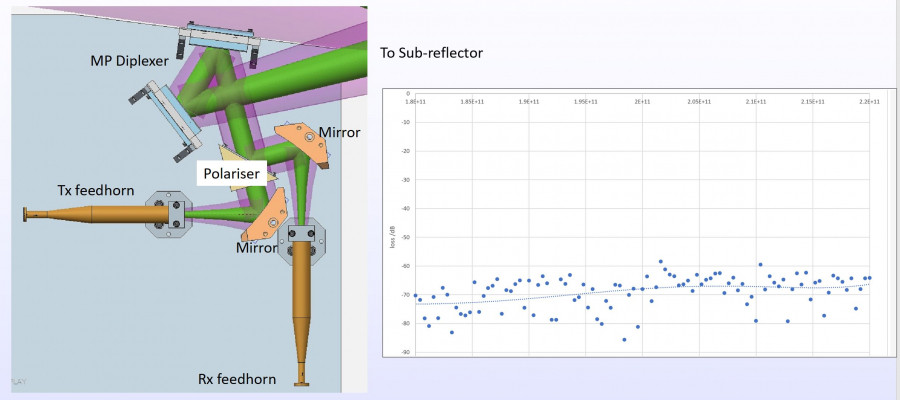Mie notches seen in small raindrops for the first time by the GRaCE radar
The GRaCE Radar - with TK designed Quasi-Optical circulator and high gain antenna - has observed Mie
notches at a frequency associated with small raindrops for the first time - a world first:
Chilboton from the air - GRace is sitting on the Red Star
GRaCE - G-band Radar for Cloud Evaluation - is a development of a 200 GHz Monostatic, pulsed, doppler,
zenith looking, solid state radar by consortium of the UK's Rutherford Appleton Laboratory, St.Andrews and
Leicester Universities as well as commercial partner TK, funded by the UK's Centre for Earth Observation
Instrumentation.

The GrACE radar has given this Doppler spectrum - taken during a rainstorm by the Chilbolton-based radar in the
early summer - which shows the first Mie notch at ~3.5m/ s, with a second Mie notch at ~ 5.3 m/s both
consistent with 0.27 m/s downdraft. This resonance requires a 200 GHz probing signal to be present
in small raindrops (sub 1mm in size in the case of the first notch).
Credit to Courtier et al., submitted to Geophysical Research Letters.
Images of the overall beam path and the external zenith-pointing mirrors can be seen below and the QO can be
seen in the second image...
...which shows (low left hyand side) the Inatani-variant Martin-Pupplet based circulator and QO ...along with the
RAL designed source and receiver modules - connected to the Tx and RX UG corrugated feed horns.
The QO has very Tx/Rx good isolation, as seen here - well better than -60dB!
More technical details can be found in an overview presentation here and a description of the antenna here
